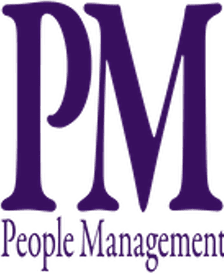This article reflects on why violence at work is seemingly on the rise and outlines how businesses can nip some of the issues in the bud before it’s too late
I recently returned from Germany, where I presented at the leading European threat assessment professionals conference. The conference included professionals with global remits from some of the world’s most renowned brands. Interestingly, one conversation dominated the breakout sessions, presentations and talk over dinner: workplace violence.
For many the term invokes images of the mass shootings that our US cousins suffer on an all too regular basis, which we struggle to relate to in the UK. A survey recently conducted on LinkedIn posed the question: ‘Is workplace violence recognised where you work?’ Of those who participated, 40 per cent said that they either didn’t know, or they confirmed that it wasn’t recognised.
The term ‘workplace violence’ refers to “any incident in which a person is abused, threatened or assaulted in circumstances relating to their work”, as defined by the Health and Safety Executive. This includes threats, harassment, bullying, domestic violence and physical violence.
There are typically four sources of this:
- Criminal: The primary motive is theft. The person responsible doesn’t need to have a relationship with the targeted business or its employees. This includes robberies or other acts of theft that result in violence, intimidation or threats being made. Terrorism acts would also apply to this type of workplace violence.
- Hostile customer/client: In this category, the person responsible has a legitimate relationship with the business (hospital, clinic, restaurant, etc). It can be a customer, patient, inmate or student who becomes aggressive, violent or threatening while engaged with the victim (waiter, nurse, prison guard or teacher) resulting in abuse, threats, harassment or physical violence. This can be conducted both online and in person.
- Current or former employee on employee: The person responsible has an employment relationship with the affected organisation or person. This can be threats, harassment or acts of violence between a current or former employee against a current staff member in the workplace. The motive is usually work-related or interpersonal conflicts among employees.
- Domestic or familial violence: The person responsible has an existing or previous personal relationship with the employee. They may also be a current or former employee or they can be entirely separate to the organisation. This can be as a result of a relationship breakdown or child custody issue, and can include harassment, stalking and violence. The incident often occurs at work as this is a venue where they know the victim will be at a specific time. It can also be transferred to managers, supervisors or security during an intervention.
The impact on the organisation involved can be significant:
- Increased costs: No one wants to work in a place where they feel unsafe or unwelcome, so good employees will leave, causing recruitment and training costs to increase. Employees who feel unsafe or forced out may sue the organisation for constructive dismissal.
- Reputational harm: Employees who are unhappy will leave negative reviews online and harm the organisation’s reputation. This makes replacing them more difficult. Employment tribunals will also harm your company’s reputation and cost money.
- Damaged ESG credentials: Having an unhappy and unsafe workforce will harm your social and governance credentials. The byproduct of this is a drop in the share price, lost investment opportunities and losing out to competitors when seeking to win contracts.
- Increased risk of insider threats: Disgruntled and unhappy employees are less effective at work and more likely to harm the business by being complacent about their cyber security responsibility. They may leak or steal privileged information or see themselves as whistleblowers and make harmful disclosures.
In recent research Defuse conducted with Oxford University, the link between the post-pandemic economy and the increase in concerning and threatening workplace behaviours was shown to be evident for several reasons:
- Disgruntled employees remain in the workplace when they may have otherwise left because of a lack of job security.
- Corporate downsizing caused competition between employees to survive job cuts.
- Additional stress when employers move shift workers to hourly contracts.
- Increased reliance on external workers on short-term contracts who haven’t been properly vetted.
- C-suites underestimate how much the employees are struggling in the post-pandemic economic climate and they fail to communicate to staff that they understand or recognise the pressures they are under.
This is supported by recently published research by the TUC, in which it was found that 29 per cent of UK employees have been the victims of workplace bullying/harassment. That’s nearly three in every 10 workers, and equates to 9.1 million of the UK’s workforce. This is compounded by two thirds of women reporting that they have been a victim of sexual harassment at work, sometimes criminally.
Despite this escalation, 67 per cent of incidents of anti-social or threatening behaviour in the workplace remain unreported. This is because 91 per cent of workers believe that bullying and harassment in the workplace isn’t dealt with appropriately.
While many, if not most, organisations have a policy to counter such behaviour at work, it is clearly a growing issue, which suggests that the policy is failing. Let’s be frank, how many of your employees have read any of your policies or could repeat what they say? It is seen by many as a ‘tick box’ exercise.
What’s the answer?
The solution lies within a professional behavioural threat assessment and management process. This is because there are often visible signs of behaviours of concern that if identified early can prevent any escalation; the earlier concerns are identified the more time investigators have to assess and initiate any management plans.
By providing training and workshops for all employees, they can recognise the behaviours of concern that may be early indicators of harm, and thus remove the guesswork of what needs to be reported. Anonymous or confidential reporting can help to ease the fears of those that step up and share their concerns with additional support being provided where required.
There then must be a clear and well-published reporting process that responds with a specific timeframe and triggers an immediate investigation, which at the very least is assisted by a threat assessment and management professional. The greatest risks occur when information is retained within single teams. That failure to share can have catastrophic consequences, so multidisciplinary investigations with agreed information-sharing protocols are key.
Every report should prompt an immediate review to ensure that any underlying issues are identified and properly managed, with critical threats requiring an immediate response. Too often these issues are handling reports of concerning, worrying or threatening behaviour that are untrained and inexperienced in dealing with threat scenarios. This fresh approach delivers a systematic process to move information about threats and potential issues from those most likely to witness early indicators to those most equipped to properly respond.
This process creates a safer place for all of us to work in and, more than that, it makes good business sense.
Philip Grindell is CEO and founder of Defuse



